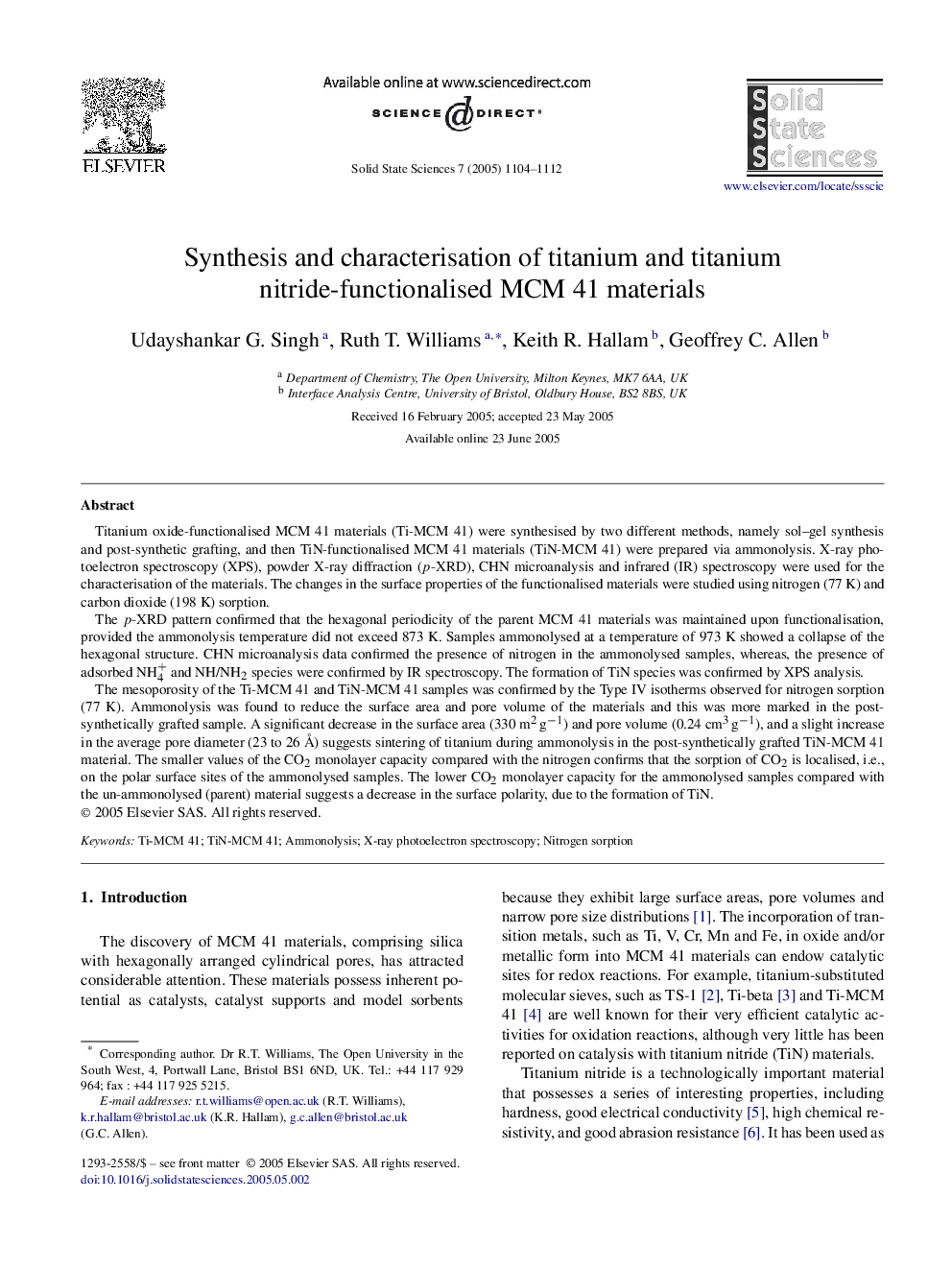| Article ID | Journal | Published Year | Pages | File Type |
|---|---|---|---|---|
| 10636728 | Solid State Sciences | 2005 | 9 Pages |
Abstract
Titanium oxide-functionalised MCM 41 materials (Ti-MCM 41) were synthesised by two different methods, namely sol-gel synthesis and post-synthetic grafting, and then TiN-functionalised MCM 41 materials (TiN-MCM 41) were prepared via ammonolysis. X-ray photoelectron spectroscopy (XPS), powder X-ray diffraction (p-XRD), CHN microanalysis and infrared (IR) spectroscopy were used for the characterisation of the materials. The changes in the surface properties of the functionalised materials were studied using nitrogen (77 K) and carbon dioxide (198 K) sorption.The p-XRD pattern confirmed that the hexagonal periodicity of the parent MCM 41 materials was maintained upon functionalisation, provided the ammonolysis temperature did not exceed 873 K. Samples ammonolysed at a temperature of 973 K showed a collapse of the hexagonal structure. CHN microanalysis data confirmed the presence of nitrogen in the ammonolysed samples, whereas, the presence of adsorbed NH4+ and NH/NH2 species were confirmed by IR spectroscopy. The formation of TiN species was confirmed by XPS analysis.The mesoporosity of the Ti-MCM 41 and TiN-MCM 41 samples was confirmed by the Type IV isotherms observed for nitrogen sorption (77 K). Ammonolysis was found to reduce the surface area and pore volume of the materials and this was more marked in the post-synthetically grafted sample. A significant decrease in the surface area (330 m2âgâ1) and pore volume (0.24 cm3âgâ1), and a slight increase in the average pore diameter (23 to 26 Ã
) suggests sintering of titanium during ammonolysis in the post-synthetically grafted TiN-MCM 41 material. The smaller values of the CO2 monolayer capacity compared with the nitrogen confirms that the sorption of CO2 is localised, i.e., on the polar surface sites of the ammonolysed samples. The lower CO2 monolayer capacity for the ammonolysed samples compared with the un-ammonolysed (parent) material suggests a decrease in the surface polarity, due to the formation of TiN.
Related Topics
Physical Sciences and Engineering
Materials Science
Ceramics and Composites
Authors
Udayshankar G. Singh, Ruth T. Williams, Keith R. Hallam, Geoffrey C. Allen,
